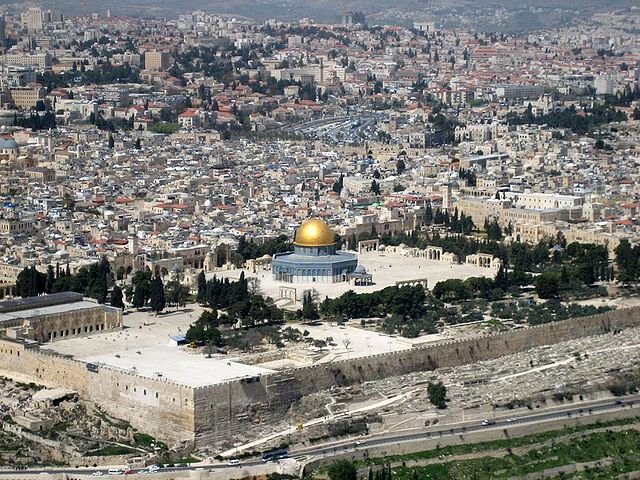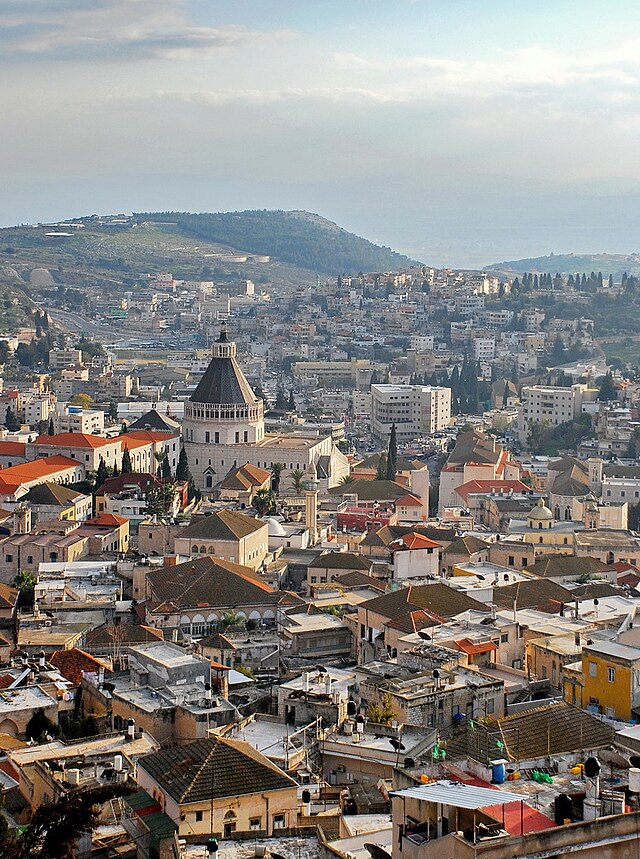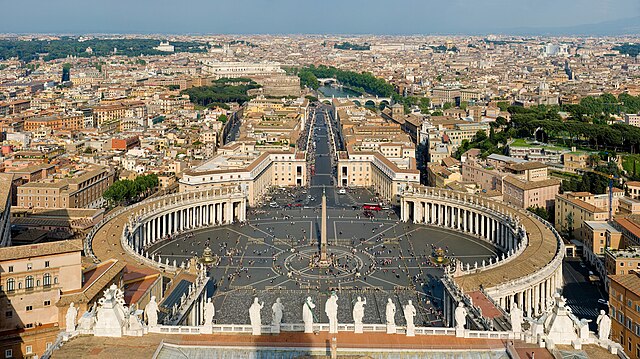Holy_city
Holy city
City important to the history or faith of a specific religion
A holy city is a city important to the history or faith of a specific religion. Such cities may also contain at least one headquarters complex (often containing a religious edifice, seminary, shrine, residence of the leading cleric of the religion and/or chambers of the religious leadership's offices) which constitutes a major destination of human traffic, or pilgrimage to the city, especially for major ceremonies and observances. A holy city is a symbolic city, representing attributes beyond its natural characteristics. Marketing experts have suggested that holy cities may be the oldest brands, and more specifically, place brands because they have value added via the perception of religious adherents.[1]
This article needs additional citations for verification. (June 2021) |
This section needs expansion. You can help by adding to it. (June 2021) |
Africa
| City | Country | Religion(s) |
|---|---|---|
| Axum | Christianity | |
| Alexandria | Christianity[2] | |
| Ewu | Christianity | |
| Ifẹ | Yoruba religion | |
| Lalibela | Christianity | |
| Nkamba | Kimbanguism | |
| Zion City Moria | Christianity | |
| Kairouan | Islam |
Asia

Western and South Asia



Central and East Asia
Southeast Asia

| City | Country | Religion(s) |
|---|---|---|
| Antipolo | Christianity | |
| Bali | Hinduism | |
| Cebu City | Christianity[13] | |
| El Salvador, Misamis Oriental | Christianity[14] | |
| Naga, Camarines Sur | Christianity/Roman Catholicism | |
| Siem Reap | Buddhism, Hinduism | |
| Valenzuela, Metro Manila | Christianity | |
| Zamboanga City | Christianity |
Europe



| City | Country | Religion(s) |
|---|---|---|
| Assisi | Christianity | |
| Athens | Hellenism, Christianity | |
| Avila | Christianity | |
| Barcelona | Christianity[15] | |
| Canterbury | Christianity | |
| Caravaca de la Cruz | Christianity | |
| Cologne | Christianity | |
| Corinth | Christianity | |
| Częstochowa | Christianity | |
| Fátima | Christianity | |
| Istanbul | Islam, Christianity[16][17] | |
| Kilkenny | Christianity[18][19] | |
| Kraljevo | Christianity | |
| Leeds | Christianity | |
| Madrid | Christianity | |
| Marija Bistrica | Christianity | |
| Medjugorje | Christianity | |
| Milan | Christianity | |
| Munich | Christianity | |
| Ohrid | Christianity | |
| Paris | Christianity | |
| Prague | Christianity | |
| Rome | Christianity | |
| Santiago de Compostela | Christianity[20] | |
| Santo Toribio de Liébana | Christianity | |
| Thessaloniki, Mount Athos | Christianity | |
| Toledo | Christianity | |
| Trondheim | Christianity | |
| Uman | Breslov Hasidic Judaism[21] | |
| Uppsala | Christianity | |
| Vatican City | Christianity | |
| Walsingham | Christianity | |
| Warsaw | Christianity | |
| Wittenberg | Christianity |
North America


| City | Country | Religion(s) |
|---|---|---|
| Clearwater, Florida | Church of Scientology | |
| Mexico City | Christianity | |
| Quebec City | Christianity | |
| Salt Lake City | Latter Day Saint movement | |
| Siparia | Christianity, Hinduism, Islam[22] |
South America
- Metti, Michael Sebastian (1 June 2011). "Jerusalem – the most powerful brand in history". Stockholm University School of Business. Archived from the original on 12 June 2011. Retrieved 1 July 2011.
- Trigilio, Rev John Jr.; Brighenti, Rev Kenneth; Cafone, Rev Monsignor James (10 May 2011). Catholic Mass For Dummies. John Wiley & Sons. ISBN 9780470767863 – via Google Books.
- "Visit Mazar-i-Sharif Afghanistan • The City Of The Noble Shrine". www.joaoleitao.com. 17 January 2020.
- "Bethlehem". www.jewishvirtuallibrary.org. Retrieved 12 July 2021.
- Dana, Nissim. (2003). The Druze in the Middle East: Their Faith, Leadership, Identity and Status, Sussex Academic Press, pp. 28–30.
- Nissîm Dānā (2003). The Druze in the Middle East: Their Faith, Leadership, Identity and Status. Sussex Academic Press. pp. 38–. ISBN 978-1-903900-36-9. Retrieved 11 September 2012.
- "Historical city Mtskheta becomes "Holy City"". Agenda.ge. 7 April 2014. Retrieved 4 October 2014.
- "Shechem (Nablus)". www.jewishvirtuallibrary.org. Retrieved 12 July 2021.
- UNESCO World Heritage Centre (11 October 2017). "Mount Gerizim and the Samaritans". Retrieved 24 December 2020.
- Jeffrey, David L. (1992). A Dictionary of biblical tradition in English literature. Wm. B. Eerdmans Publishing. pp. 538–40. ISBN 978-0-85244-224-1. Archived from the original on 8 October 2020. Retrieved 1 November 2020.
- BusinessWeek Mindanao 26 August 2011: "Divine Mercy Shrine in Misamis Oriental celebrates Birthday of the Blessed Virgin Mary" Archived 2018-03-16 at the Wayback Machine
- Parry, Ken (2009). Christianity: Religions of the World. Infobase Publishing. p. 139. ISBN 9781438106397.
- Parry, Ken (2010). The Blackwell Companion to Eastern Christianity. John Wiley & Sons. p. 368. ISBN 9781444333619.
- "The Kilkenny Cats - Popular Rhymes and Sayings of Ireland". www.libraryireland.com.
- "St Canice's Cathedral is Kilkenny's Sacré Coeur - except that it has ghosts". www.kilkennypeople.ie.
- Encyclopaedia Britannica; Or A Dictionary of Arts, Sciences, and Miscellaneous Literature. Archibald Constable. 1823. p. 500.
- "Pilgrimage to Uman • Abbas • Patrick Zachmann • Magnum Photos Magnum Photos". Magnum Photos. Retrieved 12 July 2021.
- Keith McNeal (March–April 2002). "Miracle Mother — Siparee Mai, La Divina Pastora". Caribbean Beat Magazine.
- Humanas, Alexandre De Freitas-Graduado E. Pós-graduado Em Ciências (16 July 2012). "Cidades e Lugares: Cidades sagradas para o Cristianismo".